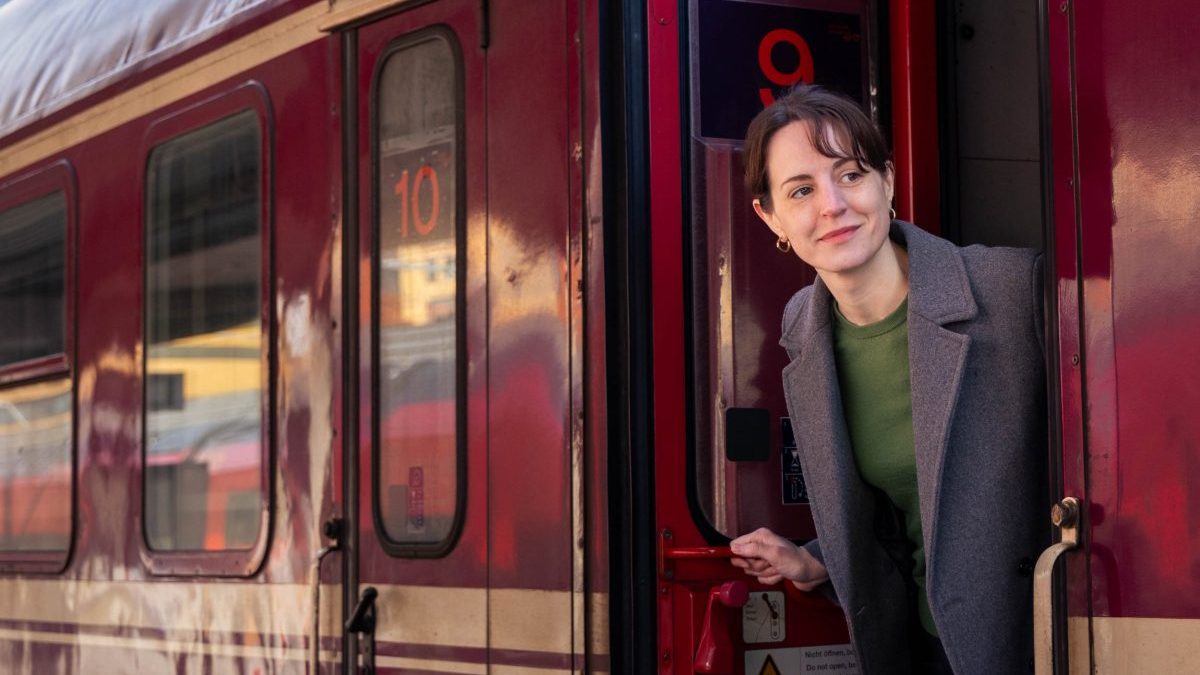Despite the teething problems, the lure of an overland journey from London to Venice for less than £100 could still prove persuasive
Half of the romance of rail travel is its unpredictability. That’s what I told myself as a European Sleeper train set off from Brussels this Wednesday evening, on what was supposed to be the launch of its pilot route to Venice. The train was due to depart at 6.06pm; the departures board said it would be 46 minutes late.
When it finally pulled in, a cheer went up over my shoulder. It came from a boy aged around eight whose family was loaded with ski equipment.
It was made up of a pick-and-mix of carriages, all a little grubby on the exterior. Some were burgundy with yellow stripes; others red and white. Several were tagged with graffiti.
Chris Engelsman – a co-founder of European Sleeper – posed with a sign celebrating the Brussels to Venice route. Passengers crisscrossed to find their carriages and piled on; cardboard EU flags were waved out of open windows.
On the platform, I met a Belgian couple due to travel to Venice on the sleeper to celebrate the anniversary of their honeymoon, 42 years ago. Like me, they’d learned of a change to the schedule – a journey of 19 hours that would include 10 cities across five countries – a couple of days earlier.
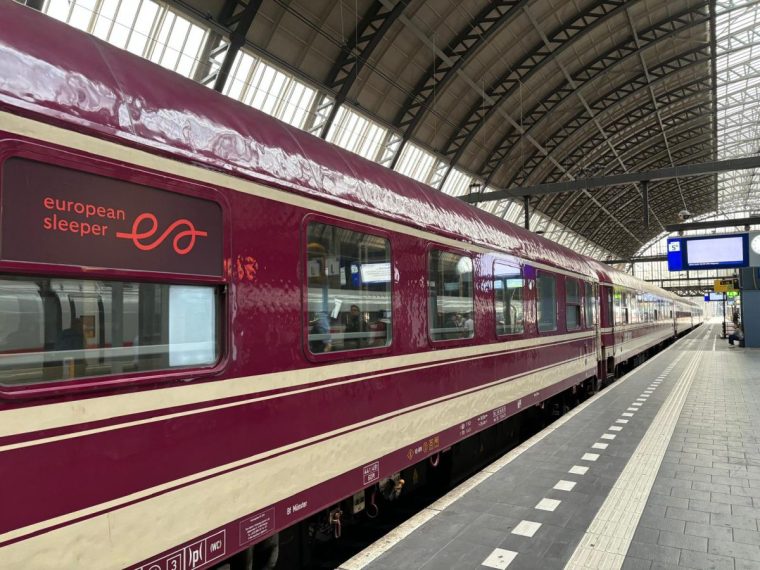 The train is made up of an assortment of different carriages (Photo: European Sleeper)
The train is made up of an assortment of different carriages (Photo: European Sleeper)
This route is the third launch by European Sleeper, a Belgian-Dutch start-up with around 15 full-time employees. Its first service began in May 2023, travelling from Brussels to Berlin. In March 2024, that route was extended to Prague. It now runs three times a week in each direction. Then, last August, a new journey was announced – Brussels to Innsbruck and Venice.
As a sleeper train virgin, this was as romantic a journey as I could’ve hoped. But Italy had different ideas.
Timetables revised
On Monday afternoon, I had received an email to say that the train would no longer be travelling to Venice. Instead, passengers would alight at Verona and transfer to a service run by Trenitalia, Italy’s state operator.
Then, at a press launch event on Wednesday afternoon, the room was told that the route would be further curtailed. “Yesterday we got a phone call from our Italian operator that we are not going to reach Italy at all,” said Engelsman.
Elmer van Buuren, the company’s other co-founder, went on to explain: “For the six journeys we’re doing for this mini pilot, we have been working with our partners for more than nine months.
“We have had hundreds of phone calls and emails to get it done. The timetables in [each] of the countries are not automatically coordinated, as they should be. It’s up to us to co-ordinate between the infrastructure managers, five of them in this case, to make sure everything fits.”
“We are still working on the next departure to make sure it actually goes to Italy.”
Federica Favii, Italy’s ambassador to Belgium, was among the other speakers at the event. She said: “The challenges [European Sleeper] have met in reaching Italy are probably linked to the need for Europe to be more united.
“I would like first of all to encourage European Sleeper to work deeper and better to reach this goal”.
Van Buuren told me that the company had been told about two weeks before the launch that the train was unlikely to be able to stop in Venice at all. This was because it only included one locomotive, and the terminus, Venice Mestre, required one locomotive at each end of the train.
Before that, European Sleeper found out that stopping at Venice Santa Lucia wouldn’t be possible due to the lack of locomotives. Mestre is now the final stop on the new timetables – the mainland station is around 10km from Venice and Santa Lucia station on the banks of the Grand Canal.
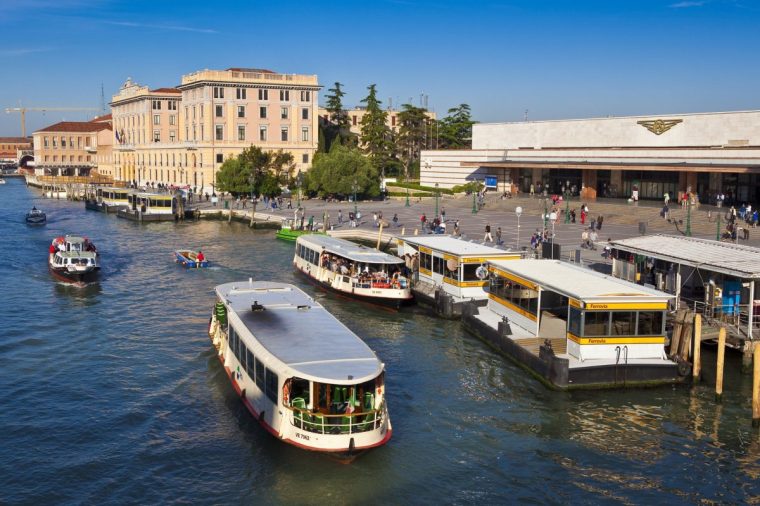 The train was meant to terminate at Venice Santa Lucia (Photo: Richard I’Anson / Getty Images)
The train was meant to terminate at Venice Santa Lucia (Photo: Richard I’Anson / Getty Images)
I was surprised that passengers hadn’t been told earlier that the train wouldn’t call at Venice. Van Buuren said: “We inform customers as soon as we have stable information. We are aware things might change several times.”
Meanwhile, European Sleeper says that the Italian operator hasn’t explained why our journey could not travel beyond Innsbruck. Instead, we were given seats on an Austrian OBB train to Verona, then on a Trenitalia train to Venice. It meant losing about 4.5 hours on the sleeper, a 40-minute wait at Innsbruck and squeezing through carriages to find an economy seat.
While it was a last-minute failure for passengers travelling to Venice, most I spoke to were travelling to ski, either in Innsbruck or Bolzano.
 Many passengers were travelling to ski resorts in the Dolomites such as Bolzano (Photo: bgodfroid /Getty Images)
Many passengers were travelling to ski resorts in the Dolomites such as Bolzano (Photo: bgodfroid /Getty Images)
Within an hour of boarding European Sleeper, couchettes were full of merriment. In one, the central table was filled with half empty bottles of red wine and sandwich wrappers. In another, a group of men in their twenties watched a football game on an iPad.
The five booths and two standing areas in the dining carriage, which was right at the end of the train, were full by 8pm. Reservations were snapped up long before I could secure a spot, but I could go in and people watch. At 10.30pm, the carriage turned into a bar.
I sunk a Affigem blond Belgian beer (€5.50). The Christmassy scene was a little disorienting in February. Wreaths wound with fairy lights hung above the bar, snowflake ornaments were tied to the ceiling and a portable radio-sized fake fire was on the plastic table of one of the booths.
Ready for sleep, I walked back down the narrow corridors. I had to squeeze myself to one side as I met passersby. Many couchette curtains were pulled across and their lights switched off. Most sleeper cabin doors were shut. As I reached my carriage, I heard a group rendition of Justin Bieber’s “Baby”. It seemed to come from a collection of young lawyers heading to Bolzano on their annual office ski trip.
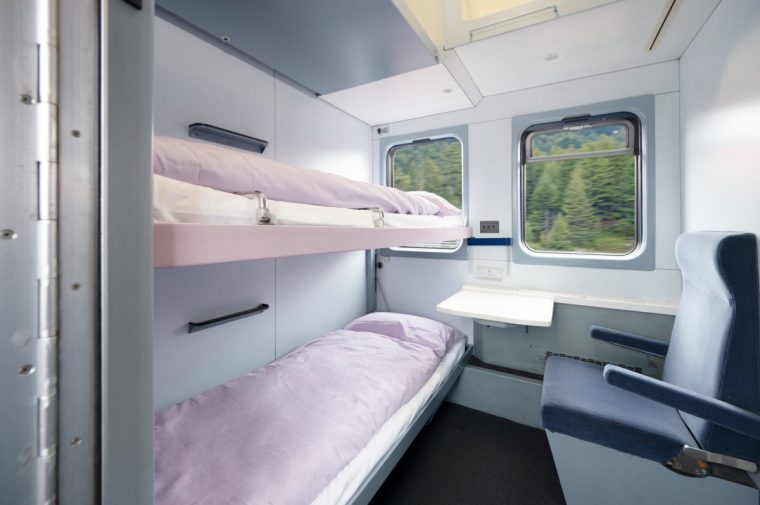 A sleeper cabin on board the train (Photo: European Sleeper)
A sleeper cabin on board the train (Photo: European Sleeper)
The next morning, I asked one of the group, Lara Hoogewys, 30, how she slept. “It wasn’t a Disney sleep. When you travel by train, you know it’s not going to be perfect.
“It made me laugh that we have to stop at Innsbruck, and we didn’t have to do that at Cologne or Munich – there always so much [engineering] work on the Deutsche Bahn.”
Hoogewys said she found the couchette more comfortable than her last sleeper train, a seat on a NightJet service.
In one couchette I walked past, the passengers had their shoulders raised to their ears against the cold, as the heating wasn’t working. However, my cabin was heated and – unlike on European Sleeper’s launch service from Brussels to Berlin – it included two working power sockets. It was more comfortable than I expected for €79. I was sharing a four-person couchette with two other passengers. I’m 5ft8, and my feet almost reached the end of the sleeping berth, which was also narrow, but I slept through the night.
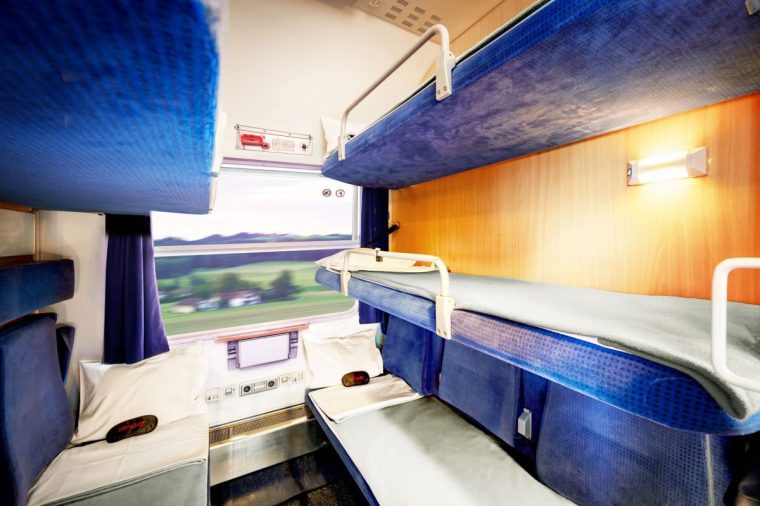 A couchette cabin (Photo: European Sleeper)
A couchette cabin (Photo: European Sleeper)
The top window, and some in the corridors, opened for fresh air. Passengers rushed to these to take pictures of the scenery en route to Innsbruck. Frost coated fields dotted with fir trees turned into rocky mountain vistas with a thick coating of snow. I stepped out briefly at Cologne, where light flakes were falling on the platform.
After a continental breakfast was delivered to my cabin (in the dining carriage, it was €16) I went for a wander. I met two friends from Ghent on a ski trip. The women, aged 43 and 39, were neighbours and in the most expensive cabins.
“I wanted the sleeper cabin for the comfort,” said one, Ellen de Meester. It had two raised areas with a mattress and office-style cushioned seats, with plenty of room to store luggage. These cabins date to the 1950s, whereas my couchette was from the 80s and the dining carriage was a 90s model.
This mix-and-match is down to the lack of rolling stock. Van Buuren explained that the couchettes on the train became available to rent when another venture was cancelled. He said both the lack of rolling stock and the difficulty of securing finance to buy or rent them are the main barriers to success. His company is just about breaking even.
Cross-border hurdles across the EU
Despite this, the company’s founders have big ambitions. A flagship project to launch a night train from Amsterdam to Barcelona is still in the works, Van Buuren confirmed. He said he would be happy if that came off by spring 2027. He added that other places in Italy, southern France and Switzerland could also work well as for destinations for European Sleeper.
“I would love to run night trains from London through the Channel Tunnel,” he added. The UK is the company’s third biggest market.
Departures this month and next have been timed to coincide with European school holidays, ski season and the Venice carnival. However, most customers – around 70 per cent – are using the service for ski trips.
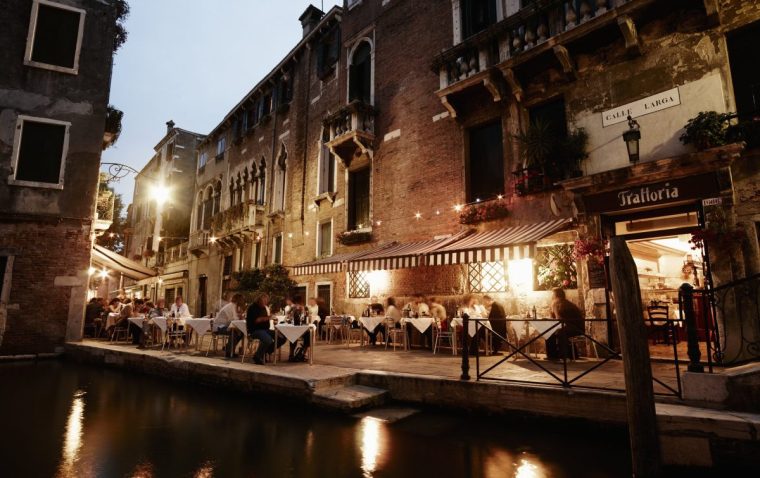 If the problems are ironed out, passengers can arrive for dinner in Venice (Photo: Gary Yeowell/Getty Images)
If the problems are ironed out, passengers can arrive for dinner in Venice (Photo: Gary Yeowell/Getty Images)
When I made it to Venice at about 3.50pm on Thursday, the temperature was a balmy 11°C compared to -1°C back in Cologne. It felt like an achievement to have travelled by train all the way from London.
Not stepping into an airport was a dream. The only red tape had been a passport check and two minutes’ waiting in the security queue at St Pancras. With Eurostar tickets to Brussels starting at £39, you could complete the entire journey for less than £100.
There were frustrations but, arriving in Venice ready to rest at my four-star hotel – Avani Rio Novo Venice (a 10-minute walk away) – I am instantly hooked on sleeper trains.
If European Sleeper can secure enough cabins to stick to its planned routes, smooth the wrinkles of cross-border travel and maintain its affordable fares, it might just keep the idea of a sleeper rail renaissance alive.
Getting there
European Sleeper tickets on the Brussels to Venice route start at €79 for a bed in a shared couchette. Services depart from Brussels at 6.06pm and arrive at Venezia Mestre at 3pm the next day. Eurostar trains from London to Brussels start from £39 each way.
Staying there
Avani Rio Novo Venice Hotel has doubles from €190, including breakfast
More info
